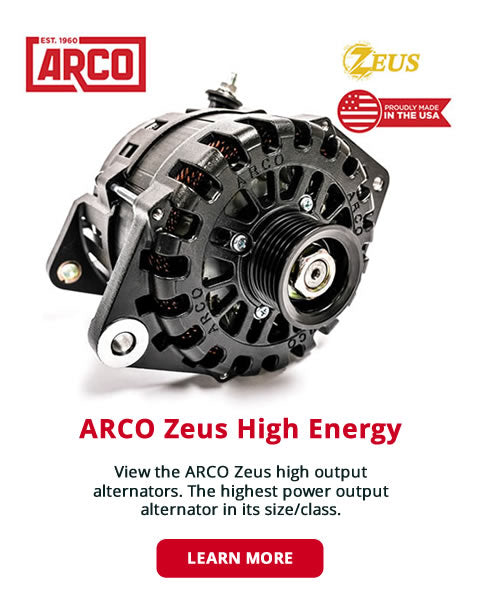Alternator Tips from ARCO Marine -
1.) Alternators approved for Marine Use:

Alternators that are being installed on inboard gasoline engines must be certified to meet Coast Guard requirements for ignition protection. In order for the alternator to be certified, it must pass the testing procedure, Marine SAE J1171, laid-out by the Society of Automotive Engineers (SAE).
Brushes inside the alternator cause some sparking when the alternator is charging. This is normal for any alternator. When the alternator is exposed to a flammable atmosphere, such as an enclosed engine compartment on an inboard gasoline applicationwith a fuel leak, the sparking from the brushes in the alternator may cause an explosion.
The Marine SAE J1171 testing procedure is as follows: A sparking device, similar to a spark plug, is installed in the brush area of the alternator. Another device is also installed in the brush area of the alternator to supply a specified mixture of propane gas and oxygen. The alternator is then placed in an explosion proof test chamber. The chamber and the alternator are then filled with the explosive gas mixture. A high-voltage coil supplies current to the sparking device in the brush area of the alternator, causing an explosion. An explosion must not occur in the test chamber while this test is being performed. This step is repeated nine times. Finally, a spark is supplied inside the test chamber causing an explosion to ensure that the explosive mixture was present during the testing operations.
2.) Alternator Circuits:
Many alternators require ignition voltage to initiate charging. You must verify that all required connections are connected to the proper terminal and have the correct voltage in order for the alternator to operate properly. Below you will find the most common alternator circuits used on marine applications.


Download our full Alternator Tech Tip sheet HERE, and view our full list of Tech Tips HERE.
You can also visit our YouTube Channel for helpful videos!


